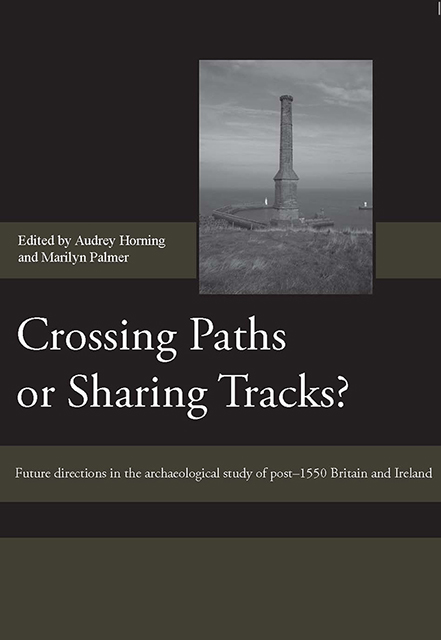 Crossing Paths or Sharing Tracks?
Crossing Paths or Sharing Tracks? Published online by Cambridge University Press: 07 March 2023
First let me thank the Editors, Audrey Horning and Marilyn Palmer, for asking me to write this Foreword. This set of papers, in all its diversity, forms a snapshot of the field at a critical moment. I see this book as a key milestone where the field has achieved a point of critical maturity in what it thinks and in what it does.
Of course, such an observation on ‘the field’ already takes a position on one of the issues that is up for debate in the papers that follow. I believe passionately that all the contributors to this volume, as varied in perspective as they are, are part of one discipline, Archaeology, whose singular and common purpose is the understanding of humans in the past through the study of the material traces that humans left behind. It is the systematic combination of materiality and humanity that makes archaeology distinctive. What makes us archaeologists, as opposed to mindless collectors of old junk, is a sense of rigour and consistency about how we gather our material and marshal it into arguments about past processes, and how we then judge our own and others’ arguments as strong or weak according to a set of shared rules.
The central question facing archaeology in the 21st century is: what should those rules be? The authors of the papers take very diff erent positions on how this one discipline, as it is applied to the later historical period, could or should be done in theory and practice. They also take very diff erent if more implicit positions on a second, more subtle question, of whether there is more than one legitimate way to do archaeology. Do we favour an eclecticism and tolerance of diff erent approaches, which carries the danger of lapsing into a disabling relativism in which all approaches are considered of equal merit and critical dialogue is attenuated? Or do we want a rigorous core to the discipline, withthe attendant danger that it leads to a dogmatic sectarianism in which the views of others are dismissed as valueless? There is a spectrum of possible positions between these two extremes.
To save this book to your Kindle, first ensure [email protected] is added to your Approved Personal Document E-mail List under your Personal Document Settings on the Manage Your Content and Devices page of your Amazon account. Then enter the ‘name’ part of your Kindle email address below. Find out more about saving to your Kindle.
Note you can select to save to either the @free.kindle.com or @kindle.com variations. ‘@free.kindle.com’ emails are free but can only be saved to your device when it is connected to wi-fi. ‘@kindle.com’ emails can be delivered even when you are not connected to wi-fi, but note that service fees apply.
Find out more about the Kindle Personal Document Service.
To save content items to your account, please confirm that you agree to abide by our usage policies. If this is the first time you use this feature, you will be asked to authorise Cambridge Core to connect with your account. Find out more about saving content to Dropbox.
To save content items to your account, please confirm that you agree to abide by our usage policies. If this is the first time you use this feature, you will be asked to authorise Cambridge Core to connect with your account. Find out more about saving content to Google Drive.